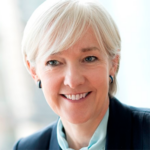In an era of rapid change, effective leadership requires more than just a compelling vision – it demands the ability to translate that vision into tangible results.
Striking the right balance between visionary thinking and operational execution is crucial for guiding organisations through uncertainty while ensuring sustained growth and stability. According to research, less than 10% of leaders are able to do both expertly.
So how do leaders strike this balance?
The Leadership Continuum: Adapting to Business Needs
Leadership is not a fixed state but a dynamic process that evolves with market conditions, organisational performance, and economic cycles.
At times, leaders must focus on bold innovation and strategic transformation. At others, they must prioritise stability and operational excellence. This leadership continuum requires timely judgements and adaptability, ensuring that organisations thrive in both expansion and consolidation phases.
While visionary leaders drive value creation through exploration and innovation, stakeholders typically remain focused on profitability and sustainable growth. To bridge this gap, leaders must integrate forward-thinking initiatives with existing activities, ensuring alignment and accountability for delivery of BAU as well as change at every level of the organisation.
The Dual Approach to Leadership
Successful leaders embrace both strategic foresight and disciplined execution. This dual approach allows them to maximise the opportunities in the present while shaping the future. These dual aspects are not necessarily contradictory. For instance:
• Optimising Existing Assets – A profit-focused mindset ensures financial stability, which creates the foundation for future investments and calculated risks.
• Exploiting Collaboration – Strong leaders foster space for innovation through partnerships but also recognise when decisive action through separate activity is necessary.
• Living Authentically – Professionalism elevates outcomes whilst transparency builds trust, particularly important in times of volatility and change.
CEOs must not only manage their own leadership approach but also empower their teams to navigate this continuum effectively. Achieving this balance requires agility, which is underpinned by four key components:
1. Capacity: Balancing Vision and Execution
Leaders must have the intellectual agility, stamina, and perspective to operate at both ends of the spectrum. Sustained business success is a marathon, not a sprint. While inspiring town hall speeches set the vision, leaders must also engage with teams on the ground, addressing arising and complex challenges, monitoring performance, and making real-time adjustments to stay on course.
For instance, announcing an ambitious AI-driven product is exciting but the CEO must ensure that development teams meet project milestones, manage budgets, and address immediate technical challenges to keep the initiative on track.
2. Ambition: Driving Organisational Growth
A strong vision, backed by ambition, is essential for reinvention and cultural transformation. However, ambition should not come at the expense of stakeholder alignment. CEOs who seek mutually beneficial outcomes for their organisations and partners create exponential value, ensuring long-term success without jeopardising stability.
For example, a retail executive might envision expanding into new markets and invests in e-commerce innovation. However, they must remain mindful of supply chain limitations and customer service expectations, to secure the steady growth in revenue and returns on investments.
3. Judgement: Applying Wisdom to Decision-Making
Effective leadership requires more than rational decision-making – it demands wisdom. This comes from experience, particularly in navigating setbacks and crises. Leaders must weigh short-term priorities against long-term objectives, drawing on previous learning to inform their judgments to steer their organisations through complex, troubled periods with courage.
This could be seen in a manufacturing leader facing economic downturns. They make the tough decision to scale back operations temporarily rather than commit to unsustainable expansion, preserving the company’s long-term viability.
4. Attitude: Continuous Growth and Adaptability
Self-awareness and a commitment to personal development are essential for sustained leadership success. Leaders who model a growth mindset, embrace setbacks, role model a culture of continuous learning, are first to embrace change and innovation. This openness to learn and relearn fosters resilience and adaptability, ensuring they, their teams and the organisation remain agile amid shifting market dynamics.
For example, a regulatory shift might render a core service obsolete, requiring a healthcare CEO to pivot their organisation by embracing AI-driven diagnostics and virtual care. By deepening their own expertise in digital health and fostering a culture of continuous learning, the CEO can simultaneously embrace a setback and transform the company into a market leader.
Ensuring success with balance
By balancing visionary leadership with operational execution, today’s leaders can navigate uncertainty, drive innovation, and maintain stability whilst delivering exceptional growth. This ensures organisational resilience and cultivates a high-performing culture where teams are empowered to thrive. In an ever-changing business landscape, the most effective leaders are those who bridge the gap between vision and execution and turn strategic aspirations into tangible outcomes and success.
Elizabeth Stewart is a Partner and Head of the Leadership Advisory Practice at Odgers Berndtson.
She has over 30 years experience as a business consultant, working for global professional services firms and clients across a breadth of private and public sectors, based in London. Working with Chairs, CEOs and CPPs, she advises on whether individuals or executive teams can deliver future mandates, the readiness and potential of successors for CEO and C-Suite roles and the effectiveness of Boards.







